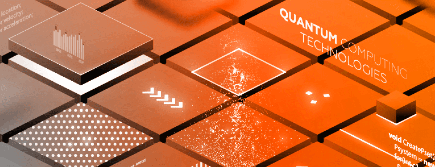Em palavras simples, a computação quântica é o uso da mecânica quântica (também conhecida como física quântica), ou a descrição das coisas nos níveis atômico e subatômico, para aumentar drasticamente a potência e a velocidade do processamento do computador.
Por que a computação Quantum é importante?
O que levaria literalmente milhões de anos para ser realizado em um computador quântico leva apenas alguns segundos. Assim, o principal benefício da computação quântica é a aceleração dos processos de computação. Em outras palavras, ela torna a computação regular muito mais avançada. Os aplicativos de computação mais rápida são amplos e variam de cibersegurança muito melhor a experiências significativamente aprimoradas do cliente, até qualquer outra coisa que exija muita capacidade de computação para produzir rapidamente um determinado resultado ou resposta.
A computação Quantum também tem uma importância incrível para o potencial do aprendizado de máquina e da inteligência artificial. Como os computadores quânticos podem passar por cenários intermináveis em um ritmo incrivelmente rápido, eles têm o potencial de aprender a se tornar essencialmente as melhores versões possíveis de si mesmos para qualquer missão ou tarefa central que lhes foi atribuída.
Como funcionam os computadores Quantum?
Quando os computadores clássicos usam transistores, que são 1 ou 0, para processar informações, os computadores quânticos usam qubits, que podem ser 1 ou 0 ao mesmo tempo. A vinculação de mais transistores só aumenta a potência linearmente, mas a vinculação de qubits aumenta exponencialmente a capacidade de computação quântica. Essa é a capacidade de um qubit, que é a unidade básica de informações quânticas e essencial para o funcionamento dos computadores quânticos.
Dito isso, a melhor maneira de pensar sobre o valor da computação quântica e como ela funciona, em inglês simples, é pensar em uma moeda. Cada moeda tem dois lados, ou valores: cara ou coroa. No entanto, quando uma moeda é jogada, ela passa algum tempo no ar girando entre ambos os valores (cara e coroa). Um computador comum só pode ler cabeças ou caudas e, portanto, não pode fazer nada com as informações que a moeda está fornecendo quando está girando no ar. Um computador quântico, no entanto, pode realmente ler esse estado giratório como um valor em si no qual a moeda é cara e coroa ao mesmo tempo.
Isso tem implicações poderosas. Pense em um PIN de quatro dígitos que usa apenas unidades e zeros, por exemplo. Para determinar esse PIN, um computador comum, já que só consegue ler um e zero, precisa passar por todas as possibilidades de cada um dos quatro slots de números (ou seja, 1 ou 0) para começar a eliminar as possibilidades e finalmente chegar ao correto. Mas um computador quântico, uma vez que ele pode se sobrepor a uns e zeros no mesmo espaço, pode realmente passar por todas as possibilidades de uma só vez.
Limitações e desafios da computação Quantum
Nos quase 40 anos desde que o físico Richard Feynman propôs pela primeira vez a ideia de computação quântica, os cientistas da computação fizeram um enorme progresso ao descobrir para quais problemas a computação quântica seria boa. No entanto, ainda há um longo caminho a percorrer até que a computação quântica seja compreendida e desenvolvida o suficiente para realmente ser aplicada aos casos de uso mencionados acima de cibersegurança e aprendizado de máquina.
Além disso, mesmo para coisas mais simples, como jogar xadrez, agendar voos de companhias aéreas e provar teoremas, os computadores quânticos, pelo menos em seu estado atual, sofreriam muitas das mesmas limitações algorítmicas que os computadores clássicos.
Essas limitações se somam às dificuldades práticas de realmente criar computadores quânticos, como a descoerência (interação indesejada entre um computador quântico e seu ambiente, o que introduz erros).
Dito isso, a computação quântica é, sem dúvida, um campo do futuro na ciência da computação, uma capacidade que muitos dos principais cientistas da computação do mundo estão desenvolvendo diligentemente para que nosso mundo possa se beneficiar de um enorme salto no poder de processamento de computadores. Não é mais uma questão de “por que” ou “o quê”, mas de “quando”.



